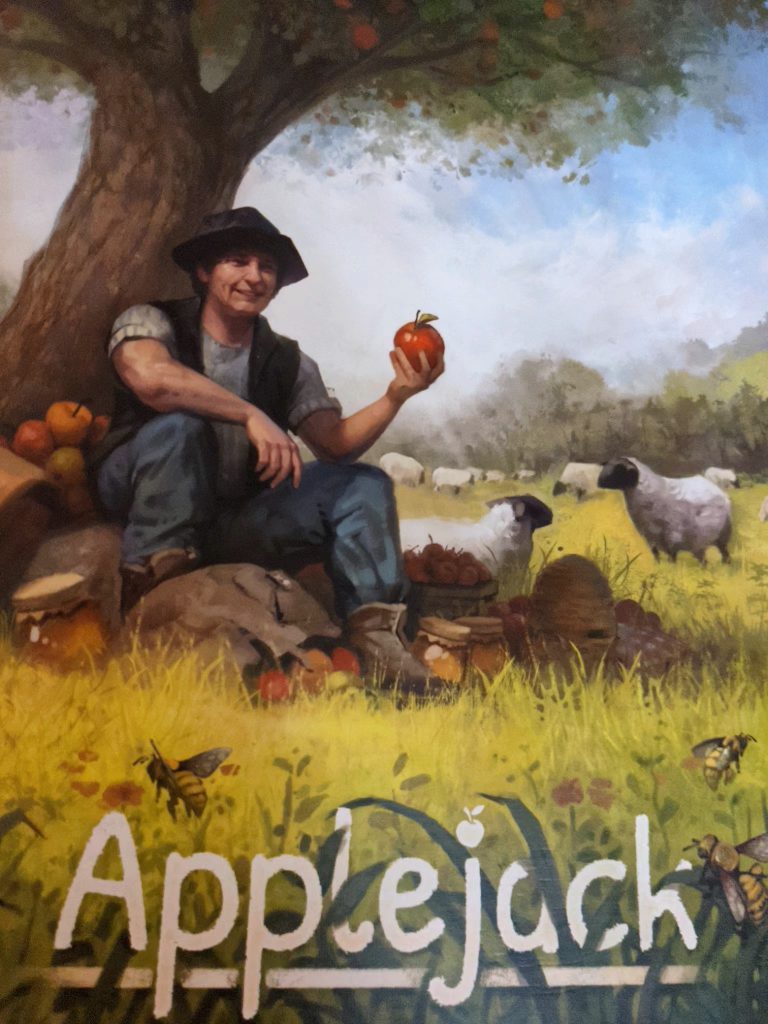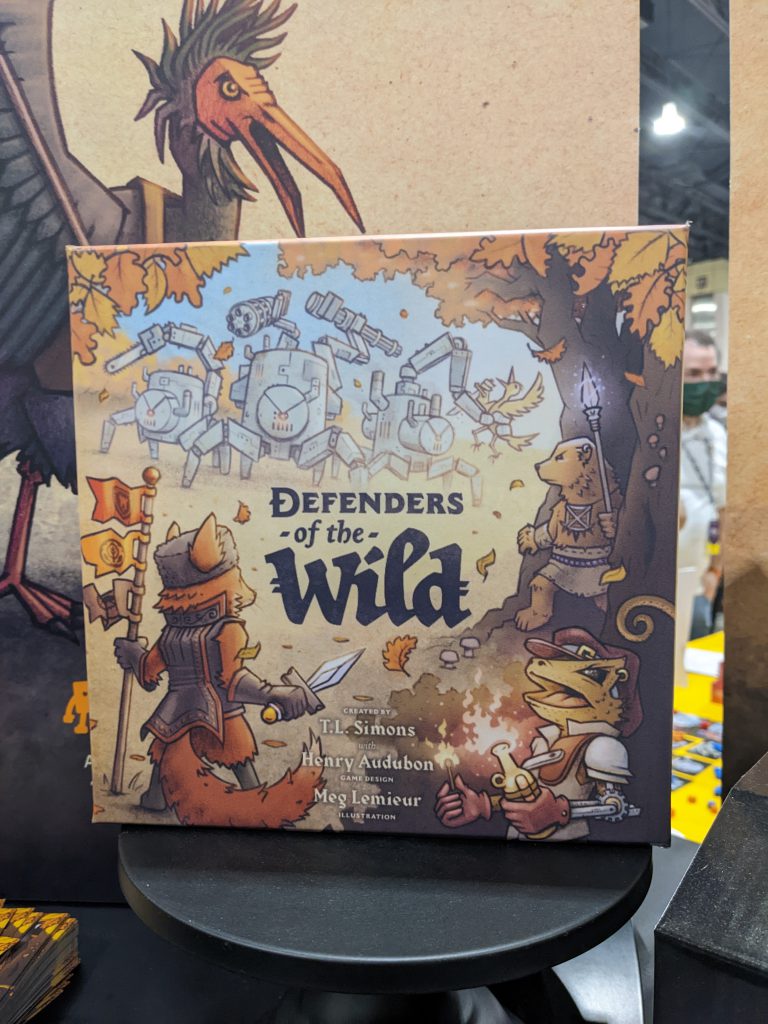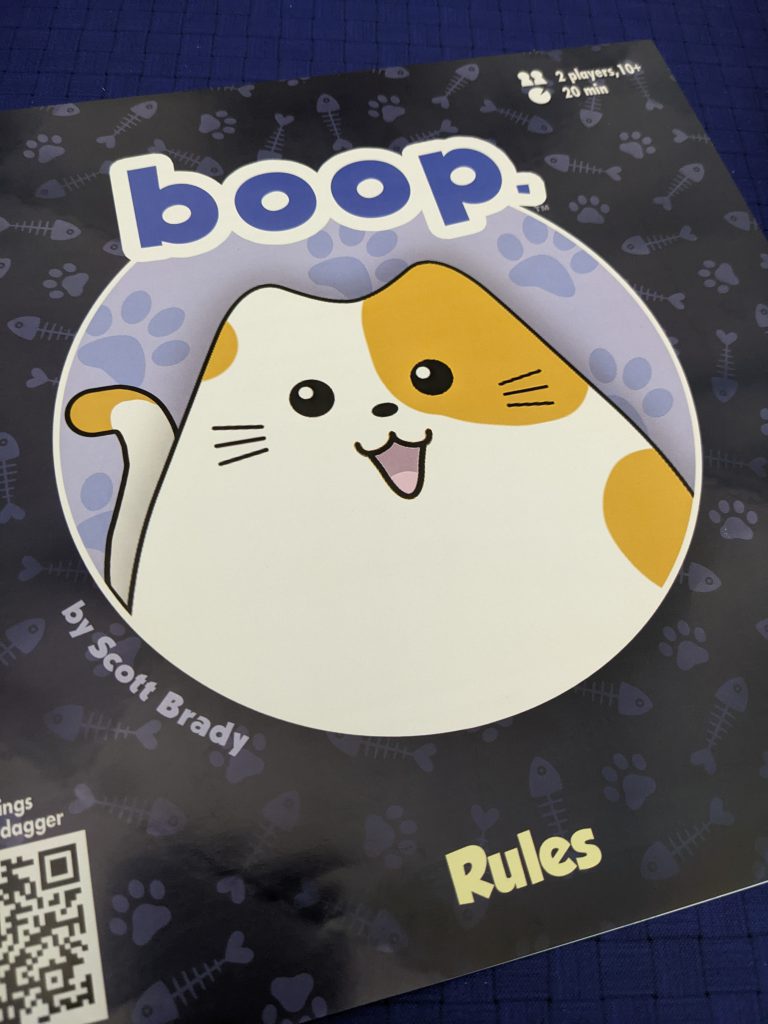I was in Penn Station waiting for the Amtrak’s Keystone Service train to take me ninety miles to PAX Unplugged, a three-day board game and tabletop gaming convention which takes place each December. It was easy to spot who else was Amtrak-ing it to the Philadelphia Convention Center for an all-things-games weekend. I saw dozens of people with the same premium board game duffle backpacks double-shouldered on their backs as they idled in the cavernous atrium and hostile architecture (no seating) of Moynihan Train Hall. These backpacks are blocky, wide, and tall – roughly the size of a dorm room fridge (and maybe just as heavy). The Walgreens was full of thickly backpacked PAXers making last-minute snack and energy drink decisions, taking care not to spin too fast and knock merch (or friends) to the floor.

The train ride south buzzed with enthusiastic, non-Quiet Car chatter: someone lamenting their forgotten lucky D20; a hot take argument about octopus familiars; a long soliloquy titled “The Three Perfect Story Arcs of Andor.”
I walk 20 minutes from the train station to the convention center. The good news: it’s my second PAX in a row so I know to use City Hall as North Star navigation. The bad news: PAX has radically changed its layout since 2021 – including its main entrance on Broad Street and not Market Street – a half-mile difference. Lost, I overshoot by that exact half-mile difference before finally asking for help. I receive cryptic Twin Peaks-esque instructions from a local: “find the huge paint brush.”

I have four hours until hotel check-in so I plop down in the media room. Complimentary lockers (first-come, first-served) are all in use – rows of padlocked black wire cages stacked three-high. It looks like an adoption event for more of those dorm room fridge board game dufflepacks that are in most of the cages. I take my chances with the honor system and leave my bags near other people’s luggage within the eyeline of a PAX staffer sitting with their laptop open to Slack, the World Cup stream, and umpteen other open tabs.
Compared to last year, 2022’s PAX Unplugged layout is sub-optimal, with all its PAX parts siloed and spread out across multiple floors and blocks. Several popular spaces including Unpub (prototypes and playtests), Learn and Play, the Classic Cardboard game library, and publisher CGE (Czech Games Edition) live on the ground floor just past the main entrance intake, in a nondescript corridor with “pssst” back alley body language. It’s an unintentional and unfortunate metaphor that the PAX Together space – which “celebrates diversity, underrepresented groups and stigmatized topics, both at PAX and in the gaming community at-large” – was also housed in this architectural speakeasy – like Baby in the corner at the end of Dirty Dancing.
The sun around which most PAX Unplugged attendees orbit for three days is the Expo Hall, a massive space the length of five-and-a-half American football fields. Two thirds of the Expo Hall comprises 291 exhibitors camped in 270+ booths. The remaining third are hundreds of folding tables and chairs set aside for board game, Magic, and Pokemon tournaments; minis painting, First Look (a library of new and newish games, imports and hard-to-find titles for open gaming); and free tables open for bring-your-own and do-it-yourself game-playing 14 hours a day. The Expo Hall: 528,000 square feet of pure, unadulterated tabletop gaming fare. Over the next three days, virtually all 44,400 of my total steps and 18 of my total miles will have been walked in or around the Expo Hall.
My first Friday pass through the Expo Hall lasts 90 minutes and only covers a third of the Expo Hall before I feel bone-deep exhaustion. Like how I feel after spending a full summer day at the beach. Instead of being buffeted by ocean waves and tenderized by the sun, I burned adrenaline while surfing through the first hundreds of what would be thousands of other people over the course of the weekend. And that’s just inside; there’s also the rest of downtown Philadelphia to connect and collide with outside the venue. PAX Unplugged is the largest crowd I have immersed myself in since before the pandemic. I feel like a feral goblin as I thread up and down the aisles trying to take everything in.

I try to remember lessons learned from previous conventions (including GenCon and last year’s PAX Unplugged), and from the two times I was in Las Vegas. Stay hydrated. Don’t forget to eat. Take breaks. Don’t stay too long each day. Go outside and look up and find the sun and sky. When I get too hungry, thirsty, tired, or cranky, that’s when I tend to make knee-jerk impulse purchases.
Spoiler: I didn’t drink enough water, I subsisted on Clif bars and foraging for convention center trash, and got zombie-tired numerous times, making plenty of impulse purchases.
Games of Note – Highlights, Impulse Purchases, and Otherwise
My most anticipated game at PAX was the Blaseball: Wild Cards tactical card game – mainly because I still have no earthly idea what Blaseball is, or how to describe it. Blaseball: Wild Cards is based on the Hugo Award-nominated, eldritch fantasy baseball sim and subsequent fandom that exploded around it in 2020.
I mentioned to co-designer Michael Fox during his demo that while I loved the TCG’s mechanics and how it captures the thrills and surprises of the last inning of a close baseball game, I never cracked the code of Blaseball, and in fact bounced so hard off it that I even blocked keyword mentions of it on Twitter. He assured me that this inaccessibility and its “if you know you know-ness” was a common gripe surrounding the Blaseball phenomenon, and that the TCG and upcoming new season of online Blaseball (launching January 9, 2023 is tailor-made for someone, like me, who feels as though Blaseball is nigh impenetrable. If he’s right, I may have to give it another shot.
But until then I can only assess the Blaseball TCG by vibes. It’s celebratory in its non-conventionality. There’s nothing typical in it as a baseball sim, or a conventional tactical card game. There are no straight lines. And based on card artwork, even with no explicit or implied sexual content, Blaseball: Wild Cards somehow felt to me like the thirstiest, queerest-on-main tactical card game since Phil Foglio’s XXXenophile.
My first purchase five minutes in the Expo Hall was Applejack. Another year, another new classic from designer Uwe Rosenberg (currently a German-only import). 2 to 4 players lay apple tiles connecting areas of (7) different varieties of apples to score honey (victory points). But honey VPs are also used to buy apple tiles during the game. The apple tiles have beehives on them which pay out honey if two are connected. It’s puzzly, thinky, & unforgiving (aka That’s So Uwe!) with shared DNA from his other titles without feeling derivative. The tile drafting/replenishment system is Nova Luna-adjacent. The way that scoring triggers when the Applejack meeple passes apple varieties on the tile drafting board is like Patchwork’s button dispensation. While Applejack does punish you for inefficiency if you don’t make smart tile placements to ensure consistent honey drip economy, you don’t actually starve like, say, Agricola, which makes Applejack my favorite Uwe Rosenberg game to date.

Another food-themed Euro set in a bygone era, Beer and Bread was an instant purchase at the Capstone Games booth. Maybe it was because I was frequently hungry on the Expo Hall floor, or because I like beer, and bread. It’s a two-player game by Scott Almes that has players play-and-pass hands of multi-use cards to gain resources, upgrade their farm, bakery, or brewery, or bake bread/brew beer for points. Games are played over six alternating turns where resources are either plentiful or scarce. And every other round your hand of cards is composed of the cards you kept during the play-passing in the previous round. Like several other of Scott Almes designs, there’s programming-in-Basic energy.
TESA Collective’s latest game is Community Garden (designed by TESA founder Brian Van Slyke), a charming game of set collection and worker placement. Place gardeners to acquire seeds, water, compost, or trowels to plant garden vegetable cards (granting points & special bonuses) and to collect sets of them to gain Harvest cards (more points).
Anecdotally, it seems that with Wingspan winning the Spiel des Jahres in 2019 and Cascadia this year that games have thematically gotten quite outdoorsy over the past few years. Flora and fauna were big trends at PAX this year. Pandasaurus Games had The Wolves in heavy rotation. Isaac Vega & Lindsay Rode’s Rose Gauntlet Games showcased Keystone: North America and previewed their follow-up, Wild Gardens. Big Cat Games was back for the first time since 2019 and brought popular hard-to-find Asian imported games to PAX as play copies and for sale. I unfortunately missed getting the uber-cute Sweet Dog Hotel, a tile placement and area control game where you create the best hotel for dogs. (No relation to the Lois Duncan classic or 2009 film).
While Out of Order Games was here with their excellent cooperative game Bloc by Bloc: Uprising (a game so nice I raved about it twice), in keeping with PAX’s animal uprising they announced their next release: Defenders of the Wild, a co-design by Bloc by Bloc designer TL Simons and Parks designer Henry Audubon. Set for crowdfunding in 2023, players are animal defenders of their wood from The Machines.

Flatout Games demoed Fit to Print, which is designer Peter McPherson’s follow up to Tiny Towns and Wormholes. This real-time polyomino race has players design front page layouts of a woodland newspaper. The vibes are cozy. Flatout is also known for Calico, which put the C in Calico and cozy with their booth design: an anthropomorphic purring cat curled on an oversized quilt patterned after Calico’s colorful patch tiles.
Cat-themed games were a cottage industry this year. (As a cat parent I approve.) Cat in the Box is originally a Japanese trick-taking game that was republished by Bezier Games. In this “quantum trick-taking” game card colors are not determined until played. It’s safe to say that the name Schrödinger has probably never been uttered more times at PAX Unplugged than this year. Another cat game sensation was boop. (yes, the punctuation and the ee cummings lowercase is intentional). It’s a dead-simple abstract where you place kitten and cat meeples over a quilted grid in order to get three in a row. The catch is that every newly placed cat “boops” all adjacent pieces (yours and your opponent’s) one square away from it (including off the board and out of play). File this sweet game under “a minute to learn, a lifetime to master.”

I was drawn to the CATtastrophe: A Game of 9 Lives booth by a raucous group playing the game. It’s a party game that doesn’t feel like your run-of-the-mill party game, because it feels like several different party games at once. It transmogrifies the funnest parts of Mario Party, Fall Guys, Dungeon Fighter, Uno, and Rock, Paper, Wizard, resulting in lots of “AHA” moments. I mentioned to Josh Norris (the designer, who was demoing the game) that it was wild that he put so many other party games and dex games and groupthink games into a blender to make this definitive version, with cats. So I was surprised that he had never designed a game before and knew very little about other board games before making CATastrophe. I just did it, he said, in true “fuck around and find out” game design philosophy.
Speaking of FAAFO, it’s safe to say that Cards Against Humanity is the Nickelback of party games. CAH has not aged well. It’s less of a party game, or even a fun social experience, than it is a starter kit for encouraging unmoderated, toxic behavior that fosters abuse, harassment, racism, and sexism. And that toxicity may be because one of the designers *did* in fact foster abuse, harassment, racism, and sexism as head of the company that publishes CAH. The biggest crime against humanity by Cards Against Humanity is that In our year of PAX 2022 it still inspires toxic knockoffs. One notable clone (which had cards banned from display and shall remain nameless) marketed itself as “imagine if Cards Against Humanity got darker and turned into a board game with optional drinking, smoking, and punishing your friends?”
Thank goodness for PopHaus Collective, who created the antidote to toxic party games with It’s Kind of a Fun Story. It’s a cooperative and competitive storytelling party game that encourages narrative through empathy, inclusion, vulnerability, and consent. It borrows from TTRPG safety tools and Codes of Conduct to create boundaries and guardrails to make the experience of sharing stories and secrets fun and non-toxic for everyone. It’s the anti-CAH and it was a breath of fresh air to see them and learn about the game. And in my informal polling, the PopHaus booth was one of the best designed, had the best snacks, and featured the most trans and bisexual lighting scheme at PAX.

Convention roundups never capture the full experience. Boiling it down to a list of games I liked or played isn’t PAX. It leaves out too many skimmed and skipped pages of the story, each full of footnotes and marginalia. It leaves out too much of how everything made me feel. I hope to riff or expand upon some of these moments in the future, through reviews and revisits of PAX 2022 stories.
Things To Remember To Bring For Next Year:
Water bottle
Noise-canceling headphones
Compression socks and gel insoles
Large grocery bag carabiner handle (to carry multiple bags)
A premium board game duffle backpack

Have any questions or feedback? Drop us a note in the comments below or email us at contact@goonhammer.com.


